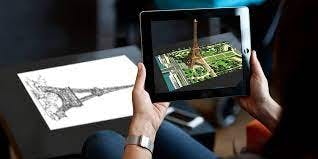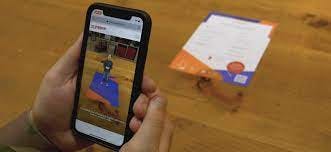Revolutionize Your Web Presence with Marker-based and Markerless AR
A Step-by-Step Guide using Unity and Zapworks
Hey Folks,
Today we are discussing how to upload your AR projects on the web using Unity and WebGL using Zappar a.k.a ZapWorks.
Introduction
Augmented Reality (AR) has gained immense popularity in recent years, and it has emerged as one of the most promising technologies. AR allows users to interact with the virtual and real worlds simultaneously.
There are many ways in which we can build AR(Augmented Reality) applications on Android or ios. We can use Vuforia, AR Foundation ( AR Core for Android or AR KIT for IOS). There are types of Ar applications:
Marker-Based AR
Markerless AR
Marker-Based AR:
AR-based applications have revolutionized many industries, including gaming, education, and e-commerce. One of the most exciting areas in AR is maker-based AR, which allows users to create their own AR experiences.
Unity is one of the most popular game engines used to create AR experiences. Unity provides many features that enable developers to create immersive AR experiences with ease. Two of the most popular AR tools used in Unity are AR Foundation and Vuforia.
AR Foundation is a Unity package that provides a set of tools and APIs for developing AR applications that work across multiple platforms, including iOS and Android. AR Foundation simplifies the development process by providing a common API for AR features, regardless of the platform. AR Foundation supports many AR technologies, including ARKit, ARCore, and HoloLens.
Vuforia is an AR platform that enables developers to create AR experiences that recognize and track images, objects, and environments. Vuforia offers an easy-to-use API that simplifies the development process. Vuforia supports multiple platforms, including iOS, Android, and Windows.

Zappar for Marker-based AR:
Zappar is a powerful AR platform that enables developers to create marker-based AR experiences that can be easily deployed as WebGL applications. With Zappar, you can create engaging AR experiences that track and respond to physical objects, images, and environments. Zappar also provides an easy-to-use interface and a wide range of features, making it an ideal tool for creating AR experiences for the web. In this blog post, we will explore how to create marker-based AR experiences using Zappar and deploy them as WebGL applications.

Maker-based AR has a wide range of uses and can be applied in various industries. Here are some of the most popular uses of maker-based AR:
Education: Maker-based AR can be used in education to create interactive and engaging learning experiences. For example, students can use maker-based AR to create their own virtual exhibits or to explore and learn about historical landmarks or famous artwork.
Retail: Maker-based AR can be used in retail to create interactive product displays. For example, customers can use their mobile devices to scan a product and see a 3D model of the product or see how it would look in their home before making a purchase.
Gaming: Maker-based AR can be used in gaming to create immersive and interactive gaming experiences. For example, players can use maker-based AR to create their own virtual worlds or to interact with real-world objects in a game.
Marketing: Maker-based AR can be used in marketing to create interactive and engaging advertisements. For example, companies can use maker-based AR to create virtual product demonstrations or to offer virtual try-on experiences for their products.
Architecture and Design: Maker-based AR can be used in architecture and design to create virtual prototypes or to visualize and test designs in real-world environments. For example, architects can use maker-based AR to create virtual models of buildings or to test the impact of different designs on the surrounding environment.
Markerless AR:
Markerless AR, also known as location-based AR or SLAM (Simultaneous Localization and Mapping) AR, is a type of AR that allows users to interact with the virtual world without the need for physical markers. Markerless AR is a rapidly growing technology that has become increasingly popular in recent years, and it has emerged as an exciting prospect for web developers looking to create engaging and interactive experiences for their users. In this blog post, we will explore how to create markerless AR experiences using Unity and deploy them as WebGL applications.
Unity is one of the most popular game engines used to create AR experiences, and it offers many features that enable developers to create immersive AR experiences with ease. Unity provides a set of tools and APIs for developing AR applications that work across multiple platforms, including WebGL. Unity also supports many AR technologies, including ARKit, ARCore, and HoloLens.
Zappar for Markerless AR:
Zappar is a powerful AR platform that enables developers to create markerless AR experiences that can be easily deployed as WebGL applications. With Zappar, you can create engaging AR experiences that track and respond to physical environments, making it an ideal tool for creating location-based AR applications. Zappar also provides an easy-to-use interface and a wide range of features, such as object recognition, image tracking, and face tracking, making it an excellent platform for creating immersive and interactive AR experiences for the web.

Markerless AR using WebGL has many potential uses and applications, including:
Retail and advertising: Markerless AR can be used to create engaging and interactive retail experiences that allow customers to see how products would look in their own environment. For example, a furniture company could create a web-based AR experience that allows customers to see how a new sofa would look in their living room.
Education: Markerless AR can be used to create educational experiences that bring abstract concepts to life. For example, a biology lesson could use AR to show a 3D model of a cell and explain its functions in an interactive way.
Entertainment: Markerless AR can be used to create immersive and interactive gaming experiences on the web. For example, a puzzle game could use AR to create a virtual environment that players must navigate to solve the puzzle.
Architecture and construction: Markerless AR can be used in the architecture and construction industry to create virtual mockups of buildings and structures, allowing architects and builders to see how a project would look in the real world.
Tourism: Markerless AR can be used to create interactive tours of historical or cultural sites. For example, a museum could create a web-based AR experience that allows visitors to see a virtual reconstruction of an ancient city.
Zappar a.k.a ZapWorks
Zappar, the popular AR platform, is now known as ZapWorks. The rebranding reflects the company's evolution from a simple marker-based AR solution to a more comprehensive AR platform that includes markerless tracking, image recognition, and a suite of tools for creating engaging and interactive AR experiences.
ZapWorks offers a wide range of features and capabilities, including 3D model import, animation, scripting, and analytics. It also supports a variety of deployment options, including web-based AR experiences, mobile apps, and social media filters. With ZapWorks, businesses and developers can create immersive and interactive AR experiences that engage and delight their audience, while also gaining insights into how their content is being used and shared.
AR application using Zapwork SDK:
Here's a step-by-step procedure on how to create an AR application in Unity using the ZapWorks SDK:
Install the ZapWorks plugin for Unity: Start by downloading and installing the ZapWorks plugin for Unity from the ZapWorks website. This will give you access to the ZapWorks SDK and tools for creating AR experiences. You can download the SDK from here.
Create a new Unity project: Open Unity and create a new project. You can choose any platform you like, but make sure to enable the Vuforia Engine AR plugin.
Import the ZapWorks SDK: Import the ZapWorks SDK into your Unity project. This will give you access to the tools and features you need to create your AR experience.
Set up your scene: Create a new scene in Unity and add any 3D models, images, or other assets you want to use in your AR experience.
Set up tracking: Set up tracking for your AR experience using the ZapWorks SDK. You can choose to use marker-based tracking or markerless tracking, depending on the needs of your project.
Add interactivity: Use the ZapWorks SDK to add interactivity to your AR experience. You can add animations, sound effects, and other interactive elements that respond to user input.
Test your AR experience: Test your AR experience in Unity to make sure everything is working as expected.
Here's a step-by-step procedure on how to deploy it on ZapWorks:
Export your project: When you're ready to deploy your AR experience to ZapWorks, export your project from Unity as a WebGL build.
Upload your project to ZapWorks: Log in to your ZapWorks account and upload your project to the ZapWorks studio. You can choose to make your AR experience public or keep it private.
Publish your AR experience: Once your project is uploaded to ZapWorks, you can publish it as a web-based AR experience. Your audience can access your AR experience by scanning a ZapCode or by visiting a web link.
Here is the Youtube tutorial playlist and Documentation for AR applications using Zapworks.
This blog post discusses how to create AR (Augmented Reality) experiences using Unity and WebGL and deploy them on the web using Zappar. It explores the two types of AR: Marker-Based AR and Markerless AR. It describes AR Foundation and Vuforia as the two most popular AR tools used in Unity. It also discusses Zappar, which is a powerful AR platform that enables developers to create marker-based and markerless AR experiences that can be easily deployed as WebGL applications. The post outlines the potential uses of marker-based and markerless AR, including education, retail, gaming, marketing, architecture, and design.

